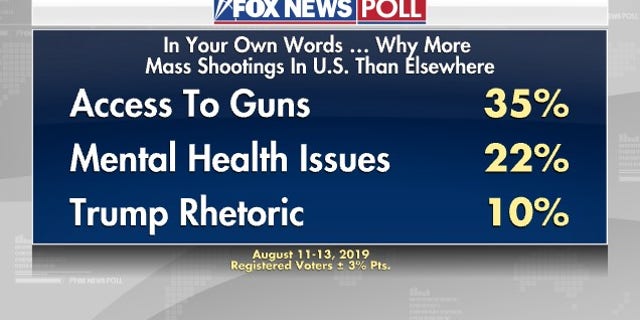The problem is that "mental health" is a very broad and general term.
Which is why I asked, do we start locking people up or taking away their guns just because the said something
Sounds more like Stalinist Russia than America
The problem is that "mental health" is a very broad and general term.
I'm good with declaring "progressivism, leftism and marxism" incurable, dangerous mental deficiencies and process all the lefties into soylent green.Which is why I asked, do we start locking people up or taking away their guns just because the said something
Sounds more like Stalinist Russia than America

Without a solid process for adjudication prior to involuntary commitment or removal of property, it would be unconstitutional and counter to the point.Republicans Who Support Gun Confiscation Laws Imagine 'Due Process' That Does Not Exist on Paper or in Practice
Testifying before the Senate Judiciary Committee last March, David Kopel, a gun policy expert at the Independence Institute in Denver, emphasized the importance of procedural safeguards aimed at protecting the constitutional rights of respondents in gun confiscation cases. Kopel's recommendations include requiring that petitions be submitted only by law enforcement agencies after an independent investigation, allowing ex parte orders (which are issued without an adversarial process) only for good cause, limiting them to one week, limiting subsequent orders to six months, requiring clear and convincing evidence, providing counsel to respondents, giving them a right to cross-examine witnesses, letting them sue people who file false and malicious petitions, and giving them advance notice of confiscation orders. Here are some of the ways existing laws fall short of those criteria.
How do red flag laws work in practice?
The actual performance of red flag laws tends to be worse than the promises on paper. While Indiana notionally requires that a hearing be held within 14 days of a gun seizure, for instance, a 2015 study found that gun owners waited an average of more than nine months before a court decided whether police could keep their firearms. Although Maryland officially requires evidence of an "immediate and
present danger" for ex parte orders, judges issue them in virtually every case.
Even when clear and convincing evidence is required for a final order, the thing to be proven—usually a "significant" risk but in some states a mere "risk," "danger," or "risk of danger"—is vague and undefined. When standards are amorphous, judges are especially likely to err on the side of issuing orders, because they imagine that failing to do so could lead to terrible consequences. The possibility that a respondent will unfairly lose his Second Amendment rights is bound to pale in comparison to the possibility that he will use a gun to commit suicide or murder. That psychological dynamic helps explain why judges in Florida issue final orders 95 percent of the time.
Donald Trump can talk about due process. Lindsey Graham can talk about due process. David French can talk about due process. But when push comes to shove, state legislators will give it short shrift, and so will judges, because they both have strong incentives to cast the net as widely as possible, the better to catch potential mass shooters. Never mind that red flag laws are mainly used to protect people against their own suicidal impulses, or that so far there is no real evidence that they prevent homicides. The point is to do something about mass shootings, whether or not that thing works or produces benefits that outweigh its costs, which in this case consist mainly of constitutional rights unjustly lost.
Proving the rule correct, since there has to be an exception to every rule.If I may ...
Yeah. Just ask Bruce Lee.

Gun manufacturers make billions in profit by knowingly selling deadly products. Then they are let completely off the hook when people take those deadly products and inflict harm on thousands of victims each year. State tort law already recognizes that certain types of products and activities are so abnormally dangerous that the entities responsible for them should be held strictly liable when people are injured. Congress should codify that same principle at the federal level for guns by creating a new private right of action allowing survivors of gun violence to hold the manufacturer of the weapon that harmed them strictly liable for compensatory damages to the victim or their family.
Which is why I asked, do we start locking people up or taking away their guns just because the said something
Sounds more like Stalinist Russia than America
So, go to any district courtroom and see judges strip people of all of their firearms because someone felt threatened by someone else under the pretense of a “protection order”...
Common SOP in contentious divorce cases

